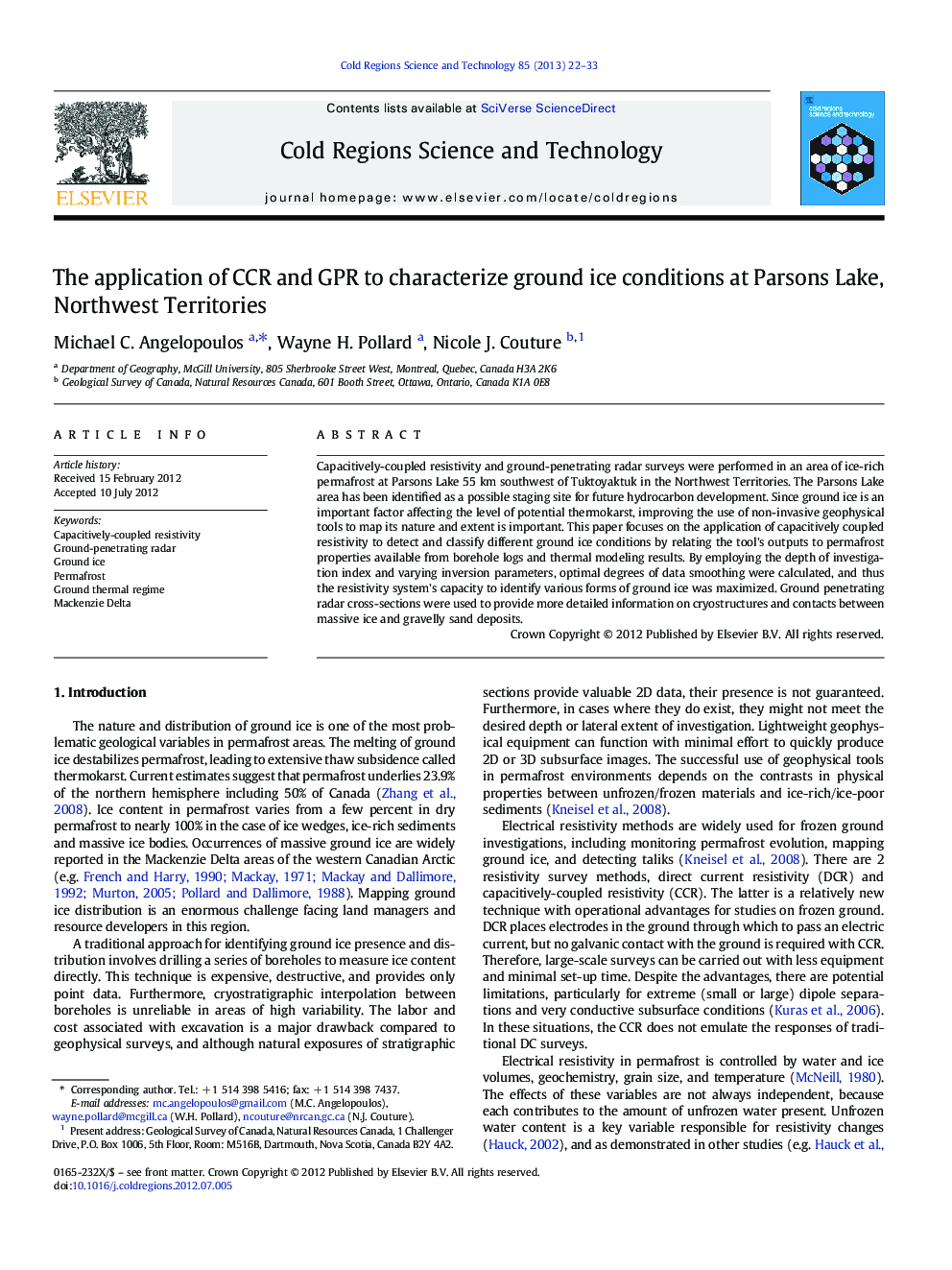| Article ID | Journal | Published Year | Pages | File Type |
|---|---|---|---|---|
| 6427018 | Cold Regions Science and Technology | 2013 | 12 Pages |
Capacitively-coupled resistivity and ground-penetrating radar surveys were performed in an area of ice-rich permafrost at Parsons Lake 55Â km southwest of Tuktoyaktuk in the Northwest Territories. The Parsons Lake area has been identified as a possible staging site for future hydrocarbon development. Since ground ice is an important factor affecting the level of potential thermokarst, improving the use of non-invasive geophysical tools to map its nature and extent is important. This paper focuses on the application of capacitively coupled resistivity to detect and classify different ground ice conditions by relating the tool's outputs to permafrost properties available from borehole logs and thermal modeling results. By employing the depth of investigation index and varying inversion parameters, optimal degrees of data smoothing were calculated, and thus the resistivity system's capacity to identify various forms of ground ice was maximized. Ground penetrating radar cross-sections were used to provide more detailed information on cryostructures and contacts between massive ice and gravelly sand deposits.
⺠Damping factors and DOI indices were used to effectively map ground ice with CCR. ⺠GPR and CCR were combined to map ground ice and detect gravelly sand deposits. ⺠Thermal models were employed to validate seasonal changes in CCR results.
